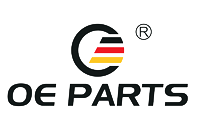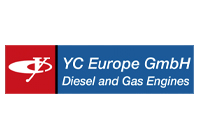Shentou provides on site services
such as factory audit and pre shipment
inspections in China
such as factory audit and pre shipment
inspections in China
Shentou Services
Reducing Quality Risks When Purchasing Lower-priced Parts
International buyers constantly receive product quotations from various Chinese suppliers when purchasing auto spare parts in China, and they could almost always find a lower quotation than the one they already have, leading many buyers to assume that there is simply no lowest but always lower price in China!
While the prices could be really attractive, some buyers will have persistent doubts about the quality of these products: can the quality of these products be guaranteed? Are the products produced in accordance with international standards or customer requirements? Can the service life meet the requirements of warranty period? Will the suppliers accept claims for defective parts within the warranty period? Making decision on the suppliers with acceptable price levels has never been easy.
Starting with this issue, we will share with you our experience on the selection of suppliers whose products are of high sales frequencies and large sales volumes, using selected products as examples:
Bind belt
Bind belt’s also known as cargo strapping. It is used to fix the goods in transportation, moving, shipping or storage. Used for locking and tightening, they are safe, reliable, light and easy to handle, and can protect objects from being damaged. They can be used in various environments with different hook types.
The bind belt may also be referred to as ratchet tie-down, fastening device or fastening belt. In this article, we will be discussing the light and heavy-duty “Ratchet Tie Down” popular in Europe.
In Europe, ratchet tie-down products are mainly used to bundle goods when they are transported by containers and truck and trailers, to prevent damages to people caused by goods moving, tilting, collapsing or falling off from vehicles in transportation. When trucks and trailers commonly seen on highways are driving at high speed, goods falling off onto the highway due to failed binding devices would directly cause damages to the vehicles following behind. This may lead to continuous collisions and terrible traffic accidents.
When the causes of the accidents are later investigated, the failures of the binding devices could be traced back to the traders or manufacturers. The suppliers will then have to bear the financial losses and other related liabilities from the consequences and losses of the accidents depending on the severity of the traffic accidents.
With that in mind, the buyers for ratchet tie-downs need to think through on how to choose the sellers with high quality at lower prices when receiving various quotations from different suppliers. Shentou has had more than 20 years of experience in supplier qualifications and selections and we are ready to share that experience with you.
Checking the sellers’ qualifications and product certification documents
When overseas buyers go to inspect and audit Chinese factories, they’d usually pay attention to the qualifications of the factories such as business licenses, quality system certifications (e.g. IATF16949 or ISO9001) and their validity periods. When the factory produces products such as ratchet tie-down which requires additional product certifications, experienced buyers would ask for such documents, but most inexperienced buyers would probably never realize these requirements and instead just focus on product prices and the appearance of the factories.
Currently all binding belts being exported to Europe are certified by the German TUV certification agencies in China. GS certificates with validity periods will be issued after the products pass certifications. Every year, the factories that have obtained the GS certifications must also accept factory audits by the TUV certification agencies. After the factories pass the audits, the validities of the GS certificates will be extended into the next cycle. Therefore, when checking the GS certificates, the validity dates of the GS certificates shallot be ignored.
Risk warnings:
○ Are the certified models marked on the GS certificates corresponding to the products being delivered?
○ Are the validity periods of the certificates still valid?
Verifying the production standards of the products
Generally, there are two production standards for binding belts being produced in China: En12195-2 standard which is applied to binding belts that are exported to the European regions and countries, and WSTDA-T-1 which is used for belts exported to the U.S. Therefore, we need to understand whether the supplier’s quotations are based on the European standard or the American standard depending on the market requirement.
With more than 20-year experience in the European auto spare parts markets, Shentou has a comprehensive and thorough understanding of the European standards. We believe that the following three specifications among the many requirements must be met:
○ Breaking strength
○ Extension webbing
○ Breaking strength webbing
Risk warnings:
○ Are the applicable standards included in the supplier’s external documents?
○ Have the on-site operation instructions adopted the requirements of the standards?
Specification and model of binding belts
The specifications and models of binding belts are usually classified according to the requirements of load capacity, length, hook type, etc. and the most commonly used load capacities are 5T and 4T; each load capacity can be ordered in different lengths, such as 8, 9,10meters; the common width of the webbing is 50mm; the structure of tensioner has standard handle length and extended handle length; the hook types include ERGO double J hook, ordinary double J hook, and U-hook. Different combinations of the above information constitute various required models. The surface treatment of binding belts can also be customized according to different requirements.
Risk warnings:
○ Is the content identified in the label consistent with the order information?
○ Is the traceability code in the label consistent with the requirements?
○ Is the GS certification information consistent with the certificate?
Dimensions and other specifications of the components and parts of the binding belt
The binding device assembly is generally composed of tensioner, webbing, and hook. Generally, the two ends of the device can be referred to as short and long sides, the short side is the tensioner, hook and webbing, while the long side is just the webbing belt and hook. The surface treatment of the tensioner and hook and the color of the webbing can be customized according to different requirements.
Risk warnings:
○ Do the material grade and thickness and the semicircle parts of the metal parts used in the binding device meet the material and heat treatment requirements?
○ Is the width of webbing within the range of +/-2mm?
○ Is the weight of webbing 126 grams per meter?
○ Sewing: Do the stitch distance, line distance and foot pressing force meet all the requirements?
○ Are the tensioners and hooks, whether made in-house or purchased externally, tested for their performance and strength?
○ Is the short side 0.5 meters?
The lab capability
The production of the binding product has become a standardized industry in China, with complete upstream and downstream supplies of raw materials and components. There are suppliers specializing in the production of webbing, tensioners, hooks, and in electroplating, and the entry barrier has been greatly reduced. Therefore, becoming a manufacturer of binding belt is not difficult anymore.
As an international buyer selecting suppliers, you can first ask the seller to provide their test reports for preliminary screening. Based on the report’s standardization, test items, and test data, you can basically tell if they are experienced with this product category.
The main test items in the test report must include: breaking strength, webbing extension, webbing breaking strength.
Apart from the above main test items, attention must also be paid to: standard tension force, test force, standard tension force and hook deformation. In the meantime, the supplier shall also have the capabilities of cause analysis, prevention, and control of the breakage.
Risk warnings:
○ Does the supplier have its own testing machine, and has the testing personnel been trained by a professional organization?
○ Whether the supplier is capable of conducting the following testing independently:
● Breaking strength (> 2lc);
● Extension webbing (<7%);
● Webbing breaking strength (> 3lc);
● Standard tension force ( 0.1-0.5LC or > 200dan).
○ C. In addition to the above required items, it is also necessary to evaluate if the supplier has the capabilities of cause analysis, prevention, and control of failures such as breakage with the following quality control standards:
● Standard tension force (< 2%);
● Hook deformation (<2%).
This article was first published in January, February & April of 2020
keywords:Product Development Project Management Services Post COVID-19 Factory Audits







